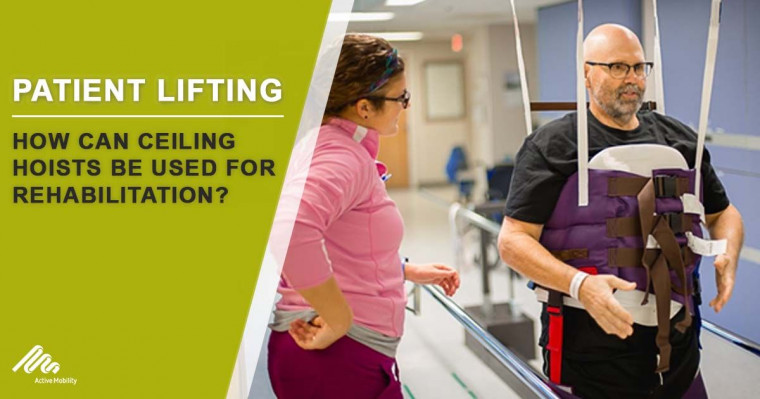-
Australia
Copyright © 2025 Powered by BCI Media Group Pty Ltd
Confirm Submission
Are you sure want to adding all Products to your Library?
Contact Detail

For sick or injured patients, rehabilitation is an absolute must. After a traumatic event, the patient needs to get moving again, regain their strength, relearn skills and find new ways of doing things.
Rehabilitation involves set training and activities over a long period of time, starting at the base level of the patient’s abilities and moving up to increase the patient’s skills as far as possible. Doctors and physiotherapists might have the patient practice moving, positioning, strength training, stretching and active movement — rehabilitation might even involve normal, everyday activities to help them regain their strength and independence.
Because they can hold a significant amount of weight, many doctors and physiotherapists utilise ceiling hoists to complete assessments and rehabilitation activities with their patients. Using a ceiling hoist, the patient can access walking bars, treadmills, couches and beds with minimal input from the doctor, allowing them to work their muscles and maintain stability.
In this article, we explore how ceiling hoists can be used for rehabilitation and give patients more confidence with their training.
COMMON USES OF CEILING HOISTS FOR REHABILITATION
BOOSTING THE PATIENT'S CONFIDENCE AND SECURITY
Hoist-assisted lifting can be used for all levels of mobility, allowing doctors and physiotherapists to provide flexible, personalised training. Using a ceiling hoist during rehabilitation exercises can help the patient feel more confident and follow the doctor’s instructions without the fear of falling — plus, the doctor can provide assistance without risking a back injury if the patient suddenly loses balance and falls.
Because the patient feels safer and more confident with their movements, the doctor can often get the patient to tackle more challenging exercises and activities. Plus, if the patient is not at the strength level to hold up their own weight, the patient can also use the ceiling hoist to take some weight off their step.
Altogether, this can help reduce the amount of time needed for rehabilitation!
CEILING HOISTS FOR GAIT TRAINING
One of the most common uses for a ceiling hoist in physiotherapy is gait training. This kind of rehabilitation helps to improve the patient’s ability to stand and walk and is often recommended if the patient has suffered an illness or injury that affects their ability to get around.
Gait training strengthens the muscles, improves balance and posture, retrains legs for repetitive motion and reduces the risk of falls.
Ceiling hoists are often used to give patients confidence while exploring particular movements and practising walking. The hoist doesn’t restrict the patient so they can move freely and rely on the sling for support when necessary. Plus, ceiling hoists are beneficial for the doctor, nurse or physiotherapist working with the patient because they don’t have to manually handle the patient themselves.
GIVE YOUR PATIENTS MORE SUPPORT DURING REHABILITATION WITH A CEILING HOIST FROM ACTIVE MOBILITY
Confidence, safety and security are key for patients in rehabilitation — with this in mind, we recommend investing in a ceiling hoist from Active Mobility! We stock ceiling hoists, gait trainers and accompanying slings that are suitable for all kinds of patients, offering the security they need to recover and live life to the fullest. Shop online or book a showroom appointment to see our ceiling hoists in action!



